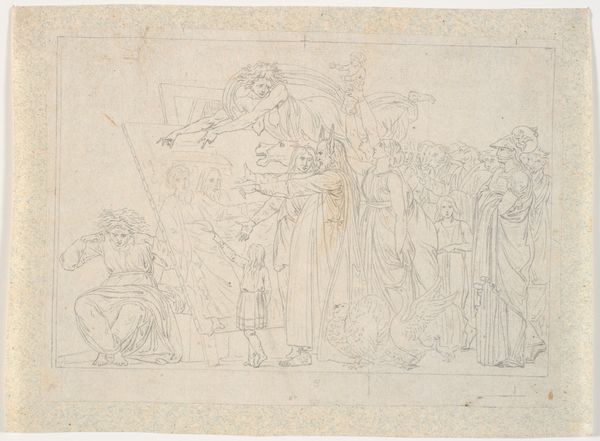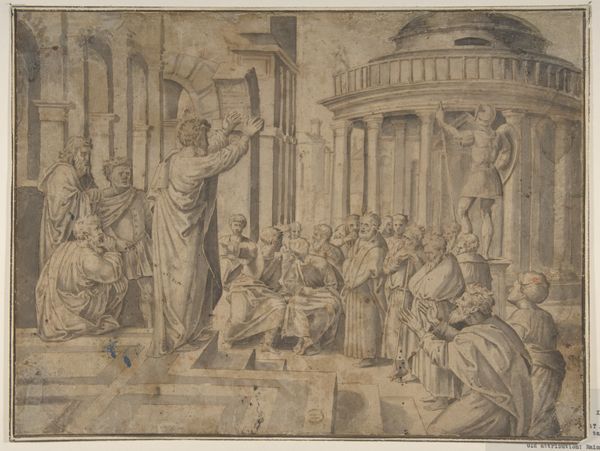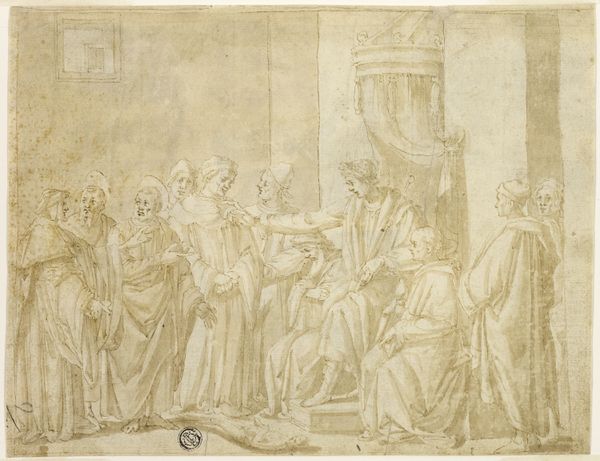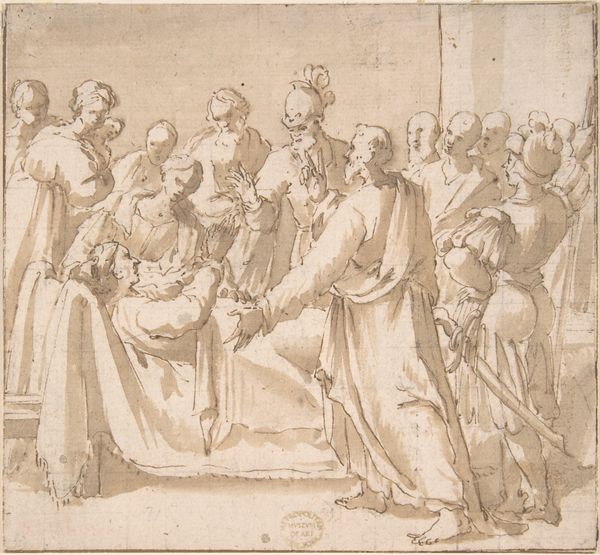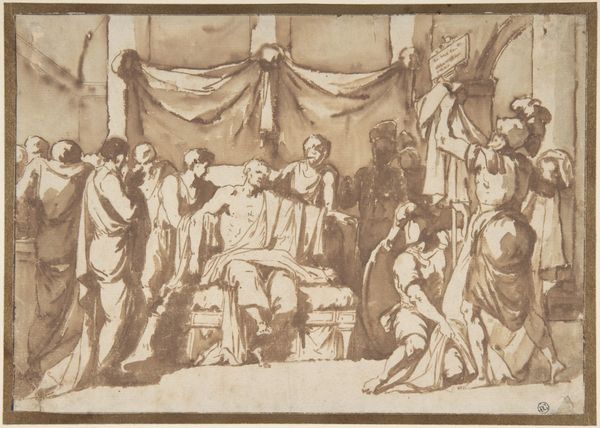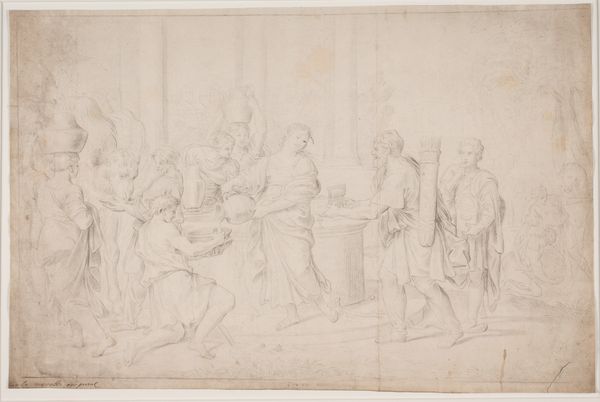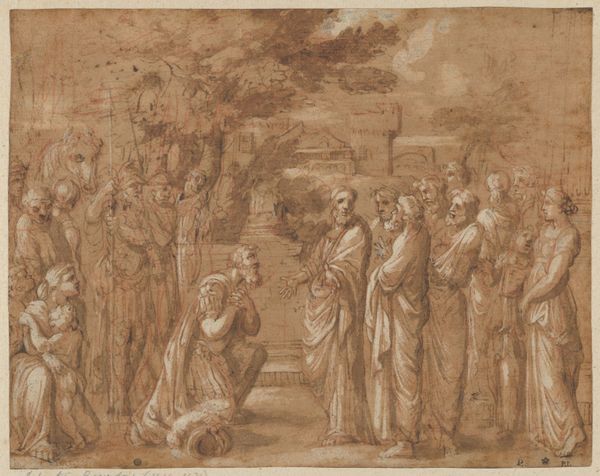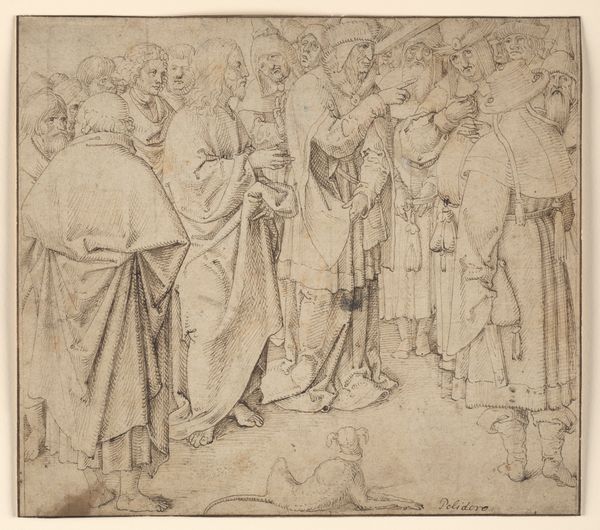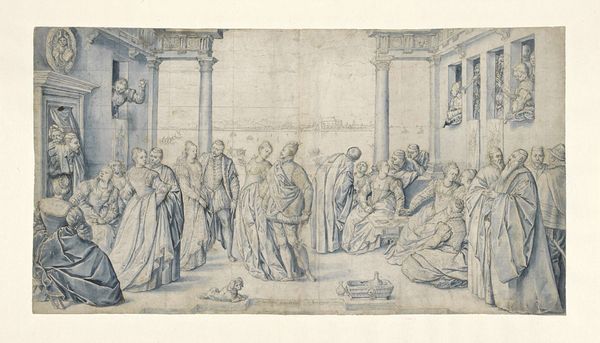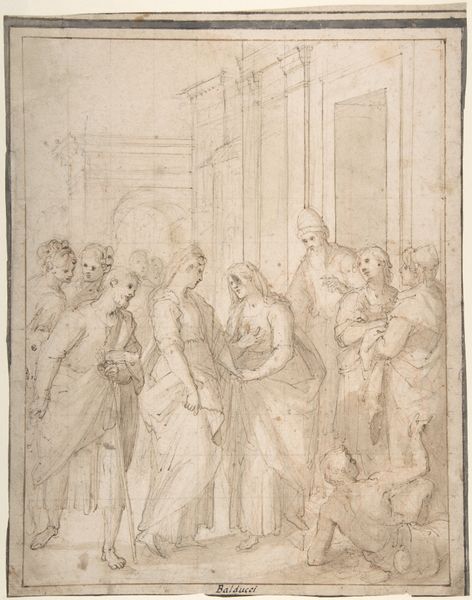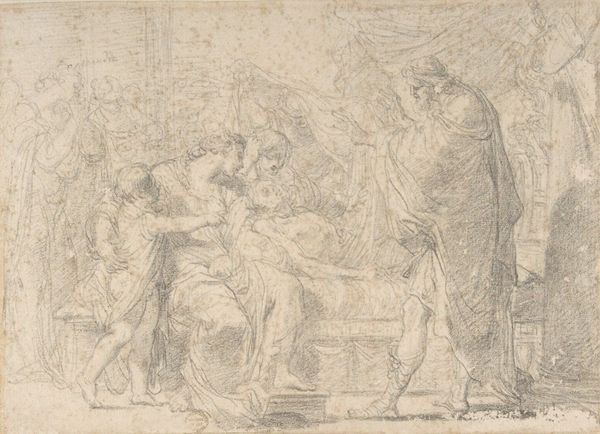
drawing, print, pencil
#
drawing
# print
#
figuration
#
pencil
#
history-painting
#
italian-renaissance
Dimensions: 7-13/16 x 9-15/16 in. (19.8 x 25.3 cm)
Copyright: Public Domain
Curator: This pencil drawing, created sometime between 1600 and 1700 by an anonymous artist, depicts "Saint Benedict and King Totila." You can find it on display here at the Metropolitan Museum of Art. Editor: What strikes me first is the starkness of the composition—the economy of line and wash creates a sense of solemnity. Look how the arrangement leads our eyes across the page. Curator: Absolutely. And what resonates powerfully is the image of repentance. We see Totila, stripped of his royal power and military guard, kneeling before the steadfast Benedict. Editor: See the formal contrast? Benedict and his monks are upright, bathed in light, structurally reinforcing their moral rectitude. Totila is on the ground, almost dissolving into shadow, visually portraying his submission. Curator: This composition captures a critical moment in the narrative: the confrontation between earthly power and spiritual authority. The king's posture—defeated and humbled—is iconic. It speaks to the transience of worldly kingdoms versus the eternal nature of faith. Editor: The drawing embodies dynamism—gestures extend outwards on both sides of the image frame as well as diagonally from the front of the picture space toward the center ground of the building at the top of the artwork. Look how Benedict and his monks form a strong block against the comparatively weaker structure of Totila's troop. Curator: True, the soldiers seem to be mere observers of a king who thought he could outsmart Saint Benedict. Remember, Totila disguised himself to test Benedict's clairvoyance, only to be exposed. Editor: Right—this encounter showcases the saint's profound spiritual insight. Beyond the illustrative depiction of the story, there’s a compelling focus on the power of image. Curator: I agree, these figures evoke potent emotional states. Consider the symbolic implications. The very act of kneeling represents surrender, acknowledging Benedict's spiritual superiority. Editor: So the composition creates a striking interplay of form and symbol, perfectly mirroring the story's central theme of humility overcoming pride. Curator: I will definitely carry those observations with me as I view this artwork going forward. Editor: Me, too. I really admire the image now—it perfectly illustrates an age-old lesson through skillful formal representation.
Comments
No comments
Be the first to comment and join the conversation on the ultimate creative platform.
